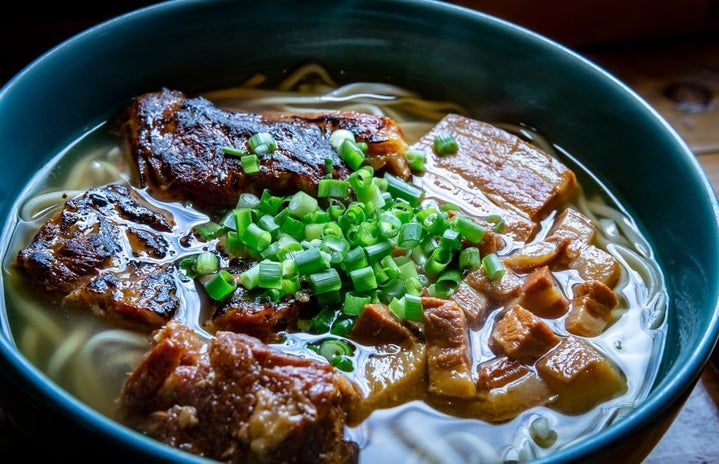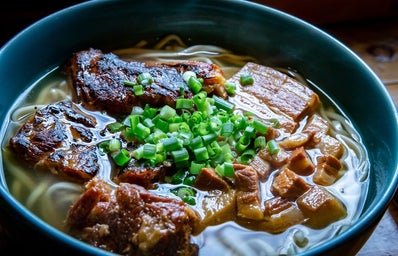Food Wars season two starts with a fried rice competition that elicits an orgasmic reaction from a high school girl, but it grows into so much more.
For people who have given up their dreams of becoming a chef while stuck in their homes during COVID-19 quarantines, Food Wars: Shokugeki no Soma will provide you with the inspiration to start again. Food Wars is a Japanese anime cartoon that follows the life of a high school student, Yukihira Soma, at the top school for young aspiring chefs — Totsuki Saryo Culinary Institute or Totsuki for short.
Season two was added to Netflix four weeks ago with the third season expecting to be released in December, though the show was a classic in the anime community long before Netflix got a hold of it. The first season was released in 2015 and season five is available on other websites in April 2020. The release on Netflix, however, encouraged many people to re-watch the series or pick it up for the first time.
The show grabbed attention from the sexual way the characters would express their opinion about the delicious food. To be blunt, it is downright lewd; the clothes burst off lead characters as they moan of delight with noodles acting like chains as they consume the food.
The show’s plot is mostly based around food battles, or shokugeki, during which a panel of judges trys the competitors’ food. Each time a character eats the food, it usually leads to a cut scene of the character — unclothed while in ecstasy — explaining in great detail the ingredients and cooking methods.
Those scenes sometimes lose viewers quickly. Anime has a reputation of being overly sexual and is connected to many fetishes. Some fans hate this stereotype because not all anime is like that. It is really a small subculture that has eclipsed the public’s view of the genre. However, after the first episode, fans realize the show is not a run-of-mill sex-driven anime.
This show embraces the stereotypes of anime by using these sexual scenes and innuendos, but it still has substance. The young chefs use real cooking techniques from molecular gastronomy to traditional Japanese cooking. Food Wars features inventive dishes like apple risotto topped with bacon, kofta kebab curry and duck katsu curry. The dishes not only sound delicious but are also incredibly diverse, which is a main theme throughout the series.
Because Totsuki is known as the best culinary school in the world, the characters and dishes hail from all across the world. One character, Takumi Aldini, is a Japanese-Italian chef who often combines his heritage with his cooking. His Naporitan Curry Fettuccine dish combined Japanese curry with a traditional pasta dish.
The show includes complex cooking theory with characters like Nakiri Alice working in molecular gastronomy. She uses centrifuges and explains a theory within molecular gastronomy called thermal sense which talks about food being served at different temperatures.
Food Wars teaches all this complex information but also has naked anime characters running around excited about food. This unclothed addition seems more like comedic relief. The show almost satirizes animes that are too sexual by having a super sexualized show for something not sexual at all — a trend that can even be seen with food shows in the States with celebrity chefs describing food with sexual words like sinful, seductive, or moist although no one’s clothes are bursting off.
Bottom line: while it might not be for everyone, Food Wars is fun and sexualized, but the focus on food and the characters still give it that classic feel. It’s a show that will inspire its audience to start cooking or even bust a laugh… just keep the children out of the room.


